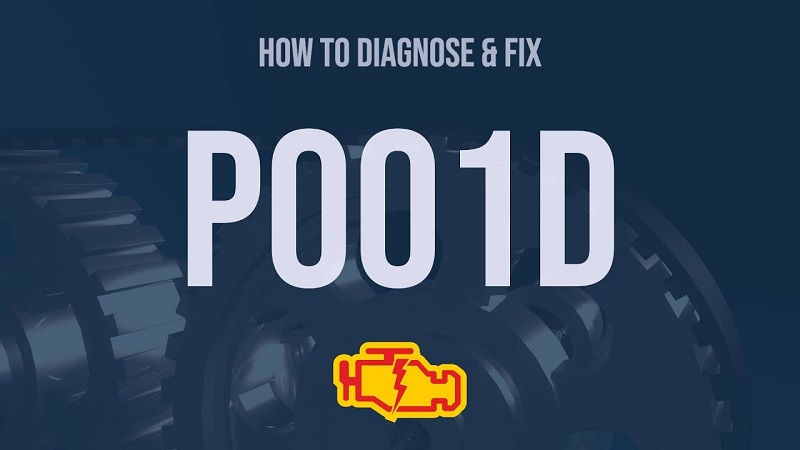This post contains affiliate links. This means I will make a commission at no extra cost to you should you click through and make a purchase [ “As an Amazon Associate, I earn from qualifying purchases.” ]. Read the full disclosure here.
Deciphering the P001D Code: Unveiling the “A” Camshaft Profile Control Circuit/Open Bank 2 GuideMechanic.Com In the intricate world of automotive diagnostics, encountering a P001D code can provoke concern and prompt immediate attention from both vehicle owners and mechanics.
Among the multitude of diagnostic trouble codes that modern vehicles can display, the P001D code, specifically indicating an issue with the “A” Camshaft Profile Control Circuit/Open in Bank 2, stands out due to its potential impact on engine performance and longevity.
In this comprehensive article, we’ll delve into the meaning behind this code, explore its implications, and discuss potential causes and solutions.
See Also: P001B Code “A” Camshaft Profile Control Circuit Low Bank 1
Understanding the P001D Code:

Let’s begin by unraveling the P001D code. The “P” in P001D denotes that it is a powertrain-related code, focusing on issues within the engine and transmission systems.
The subsequent three characters, “001,” pinpoint a specific fault within the system, while the final character, “D,” often signifies a particular area or component within that system.
The term “A” Camshaft Profile Control Circuit/Open Bank 2 embedded within the code provides further clarity. The camshaft, a critical component within the engine, orchestrates the precise timing of intake and exhaust valve operations.
The camshaft profile control circuit is a sophisticated feature in modern engines that facilitates variable valve timing, optimizing performance, fuel efficiency, and emissions.
The designation “Bank 2” refers to the side of the engine where the second set of cylinders is located in vehicles equipped with multiple banks of cylinders. This configuration is commonly found in V6, V8, and other multi-cylinder engines.
In essence, the P001D code alerts the vehicle’s onboard diagnostics system that it has detected an open circuit condition in the camshaft profile control circuit for the “A” camshaft on Bank 2.
Implications of the Code:
While encountering a P001D code may not immediately render your vehicle inoperable, it signifies an issue that demands prompt attention.
The camshaft profile control circuit plays a crucial role in engine operation, affecting performance, fuel efficiency, and emissions. Ignoring the problem could lead to compromised engine performance, increased fuel consumption, and potential engine damage over time.
Potential Causes of the P001D Code:

Identifying the underlying cause of a P001D code requires a systematic approach and may necessitate professional expertise and specialized diagnostic equipment. Several common culprits are known to trigger this trouble code:
Faulty Camshaft Position Actuator Solenoid:
The camshaft position actuator solenoid regulates oil flow to the camshaft phaser, which adjusts the camshaft’s timing. A malfunctioning solenoid can result in an open circuit condition in the camshaft profile control circuit.
Wiring or Connection Issues:
Corrosion, damage, or disconnection of electrical connections or wiring within the camshaft profile control circuit can create an open circuit condition, disrupting the flow of electrical signals.
Faulty Camshaft Position Sensor:
A defective camshaft position sensor may fail to detect the camshaft’s position accurately, leading to improper adjustments in the camshaft profile control circuit.
Mechanical Issues:
Mechanical problems, such as a stuck camshaft phaser or timing chain/belt issues, can also affect the operation of the camshaft profile control circuit.
P001D Code “A” Camshaft Profile Control Circuit/Open Bank 2
Diagnosing and Resolving the Issue:
Addressing a P001D code entails a systematic diagnostic approach to accurately pinpoint and rectify the underlying problem. Here are some steps commonly undertaken by mechanics and automotive technicians:
Comprehensive Fault Code Scan:
Begin by conducting a thorough scan for additional fault codes that may provide valuable insights into the underlying issue.
Visual Inspection:
Inspect the camshaft profile control circuit wiring and connections for signs of damage, corrosion, or disconnection. Repair or replace any faulty components as necessary.
Test Camshaft Position Actuator Solenoid:
Test the camshaft position actuator solenoid to ensure proper functionality. This may involve electrical testing and physical inspection for damage or debris.
Check Camshaft Position Sensor:
Validate the operation of the camshaft position sensor using diagnostic tools. Replace the sensor if it is found to be defective.
Inspect Mechanical Components:
If no electrical issues are detected, inspect mechanical components such as the camshaft phaser, timing chain, or belt for any abnormalities or malfunctions.
Clear Codes and Test Drive:
After addressing identified issues, clear the trouble codes from the vehicle’s memory and conduct a test drive to confirm that the problem has been resolved. If the P001D code recurs, further diagnostic procedures may be warranted.
Conclusion:
See Also: P001C Code “A” Camshaft Profile Control Circuit High Bank 1
Encountering a P001D code indicating an open circuit condition in the “A” camshaft profile control circuit for Bank 2 serves as a warning sign of potential irregularities within your vehicle’s engine.
While diagnosing and resolving the underlying issue can be complex and may require professional intervention, taking prompt action is crucial to prevent potential damage and ensure optimal engine performance.
By understanding the significance of the trouble code and its potential causes, you can take proactive measures to safeguard your vehicle’s longevity and efficiency on the road ahead.
- Catalytic Converter Cleaner Canadian Tire - April 10, 2025
- Catalytic Converter Cleaner Petrol - April 9, 2025
- Catalytic Converter Cleaner Walmart - April 9, 2025
